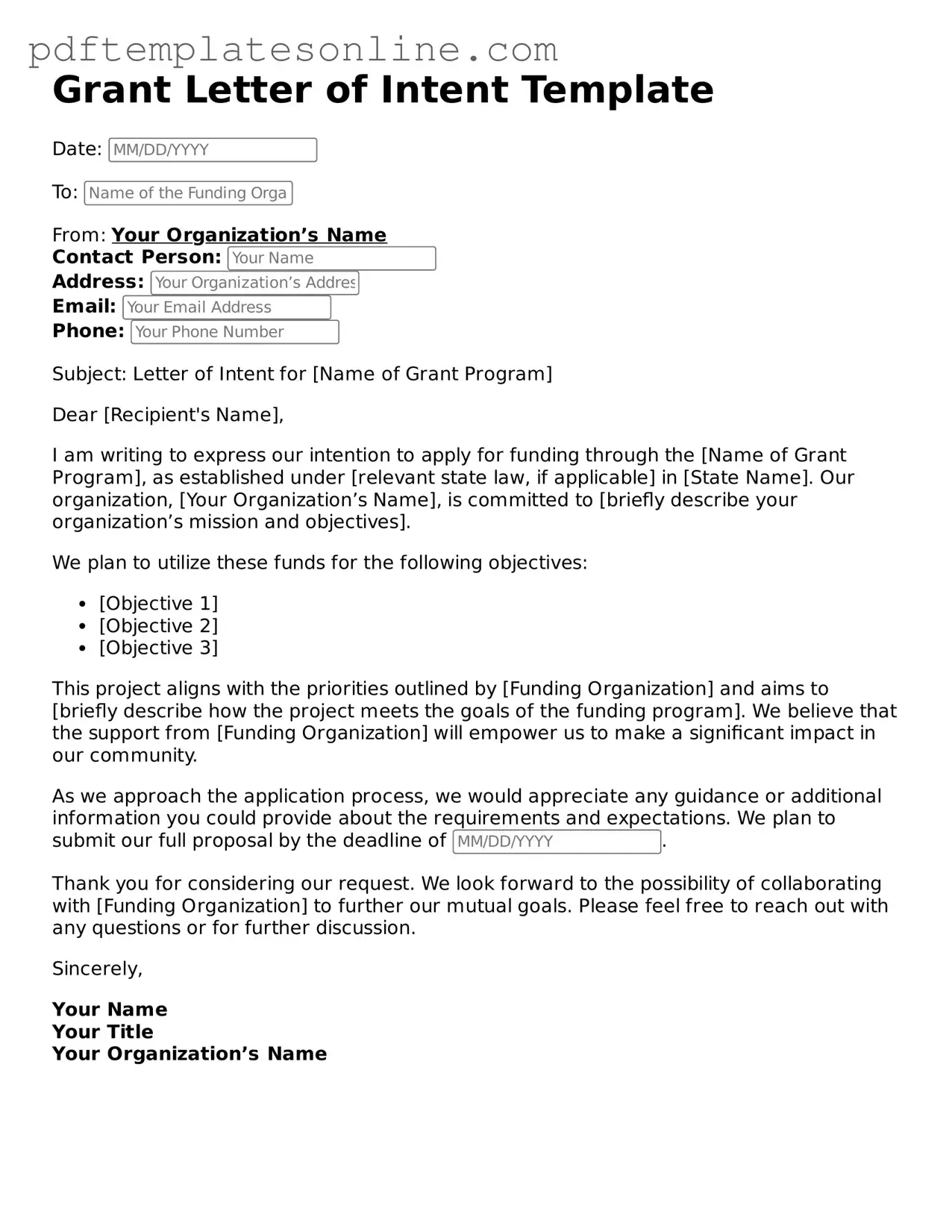When completing the Grant Letter of Intent form, individuals often overlook crucial details that can affect their chances of securing funding. One common mistake is failing to adhere to the specified guidelines. Each grant may have unique requirements regarding format, length, and content. Ignoring these stipulations can lead to immediate disqualification.
Another frequent error involves providing insufficient information about the project. Grant reviewers seek clarity and detail. A vague description may leave them with more questions than answers. It is essential to articulate the project's goals, target audience, and anticipated outcomes clearly. Without this information, the proposal may lack the necessary depth to persuade reviewers.
Moreover, applicants sometimes underestimate the importance of demonstrating organizational capacity. Reviewers want to know that the organization has the skills and resources to execute the proposed project successfully. Failing to include relevant qualifications, past successes, or partnerships can weaken the application. Highlighting these aspects can significantly strengthen the proposal.
Another mistake is neglecting to proofread the document. Typos, grammatical errors, and formatting inconsistencies can detract from the professionalism of the submission. Such oversights may suggest a lack of attention to detail, which could reflect poorly on the applicant's commitment to the project. A thorough review is essential to ensure clarity and professionalism.
Finally, some applicants do not engage stakeholders in the process. Feedback from team members, partners, or community members can provide valuable insights and strengthen the proposal. Ignoring this collaborative approach may result in a less comprehensive application. Engaging others can enhance the project's relevance and demonstrate broader support, which can be appealing to grant reviewers.
